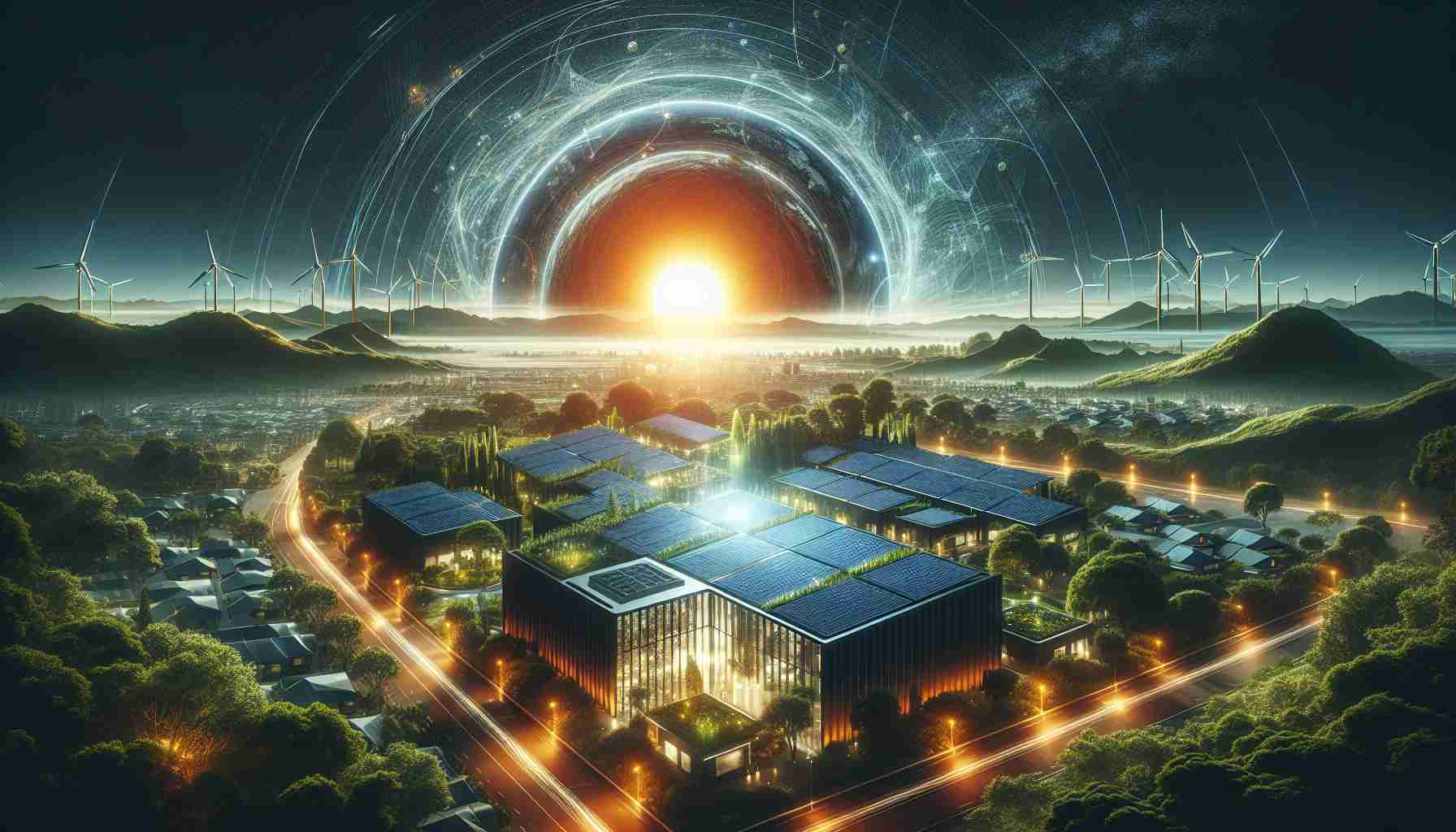- Vast solar projects in Illinois and Texas spearheaded by EDP are advancing renewable energy with a combined capacity of 400 megawatts.
- These projects are part of EDP and Microsoft’s expanding partnership, totaling five operational initiatives across the U.S.
- The Wolf Run, Hickory, and Cattlemen II projects contribute 140 MW, 110 MW, and 150 MW, respectively.
- Microsoft is purchasing 389 megawatts of electricity from these projects, reinforcing its commitment to sustainability.
- Long-term virtual power purchase agreements showcase Microsoft’s goal to reduce carbon footprints.
- This collaboration between industry leaders illustrates the potential of uniting technology and sustainability for a cleaner future.
Vast fields of glittering solar panels now stretch across the sunlit regions of Illinois and Texas, marking a significant stride in renewable energy. EDP, a leader in sustainable power, has triumphantly unveiled three grand-scale solar projects with an impressive total capacity of 400 megawatts. These projects aren’t just about numbers; they’re a beacon of progress for Microsoft and EDP’s ambitious partnership, elevating their operational initiatives to a total of five across the United States.
In the rolling landscapes near Jacksonville, Illinois, the Wolf Run solar project unfurls its 140-megawatt might, while the Hickory project, a 110-megawatt solar powerhouse, finds its home close to Jerseyville. Further south, in the vastness surrounding Austin, Texas, the Cattlemen II project roars to life, channeling 150 megawatts of pure solar potential.
Microsoft, synonymous with technological innovation, embraces a sustainable future by committing to purchasing 389 megawatts of electricity backed by renewable energy credits from these initiatives. Through long-term virtual power purchase agreements, Microsoft solidifies its dedication to reducing carbon footprints and driving a cleaner tomorrow.
What emerges is a vibrant picture of collaboration where technology meets sustainability, driving a narrative of hope and progress. As urban centers and rural spaces alike bask in the benefits of clean energy, the horizon brightens with possibilities. Here lies a key takeaway: when industry giants unite for a common green goal, the future shines a little bit brighter for everyone.
The Solar Energy Revolution: What Traditional Sources Won’t Tell You!
Pros and Cons of Large-Scale Solar Projects
Pros:
– Environmental Benefits: Solar energy projects like those in Illinois and Texas significantly reduce carbon emissions compared to fossil fuels.
– Job Creation: The construction and maintenance of solar farms create employment opportunities in local communities.
– Energy Independence: Solar projects contribute to energy diversification and reduce dependence on nonrenewable resources.
– Cost Effectiveness: After the initial investment, solar farms generally have low operating costs since sunlight is free.
Cons:
– High Initial Costs: The upfront cost for developing large-scale solar projects can be substantial.
– Land Use: Solar farms require significant land space, which can be an issue in densely populated or ecologically sensitive areas.
– Intermittency: Solar energy production is weather-dependent, and energy storage solutions can be costly.
Market Analysis and Trends
The growth of solar energy projects is part of a broader trend toward renewable energy, driven by regulatory incentives and corporate sustainability goals. The solar industry is expected to continue growing rapidly as technology improves and costs decline. According to the International Energy Agency (IEA), solar power will become the largest source of electricity globally by 2050.
Relevant Innovations in Solar Technology
– Bifacial Panels: These panels can capture sunlight on both sides, increasing efficiency.
– Floating Solar Farms: These are solar panels installed on bodies of water, reducing land use concerns and evaporation.
– Perovskite Solar Cells: They offer a cheaper alternative to traditional silicon cells and are easy to manufacture.
FAQs
– How do solar panels affect local wildlife?
Solar farms can impact local ecosystems, but careful planning and wildlife-friendly practices (such as creating natural habitats) can mitigate these effects.
– Are there any limitations on where solar farms can be built?
Ideal locations are places with consistent sunlight and open land. However, factors such as land cost and environmental concerns may limit some areas.
– What are virtual power purchase agreements (VPPAs)?
VPPAs are financial contracts that allow companies like Microsoft to purchase renewable energy at a fixed price, reducing market risk and supporting sustainability targets.
Compatibility and Use Cases
While solar energy is versatile and can be implemented from small residential systems to large-scale industrial projects, it’s essential to consider compatibility with local energy grids and potential requirements for energy storage systems to manage supply and demand effectively.
Sustainability and Environmental Impact
Large-scale solar projects are often assessed for their environmental impact, which includes evaluating ecosystem disruption, water usage, and waste management during manufacturing and disposal of solar panels. The focus remains on maximizing positive outcomes while minimizing adverse effects.
Suggested Links
For further information and updates in the solar energy industry, visit:
– EDP
– Microsoft
– International Energy Agency
